Mastering Customer Retention: A Data-Driven Approach to Customer Churn Analysis
Harness the power of data for customer churn analysis and reduced attrition. Learn how to analyze and apply insights to minimize customer loss today!
Dive into the world of churn risk prevention by understanding the key customer churn factors preventing you from fostering long-lasting client relationships.

Churn. Businesses suffer trillions of dollars in revenue loss every year because of this dreaded word.
eCommerce businesses are no exception. Churn is a serious factor that can have a devastating impact on your business, so identifying and reducing churn risk factors is key to mitigating their effects.
In this guide, we’ll explore what churn is, how to calculate it, and look at how to identify churn risk factors that cause it in your own business.
| TLDR Key Takeaways |
|
A high churn rate causes your company’s reputation and future growth prospects to be damaged, which in turn causes you to lose revenue and incur costly overhead costs to replace the customers you lost. |
When customers don’t return or take their business elsewhere, it has the potential to create a devastating domino effect that topples your eCommerce business.
High churn rates lead to:
All of these issues create a huge barrier to growth and can be difficult to overcome. And in this economic climate, you can’t afford to take a chance with customer churn—you need to take proactive steps to boost customer retention.
The formula for calculating your eCommerce churn rate is fairly simple: divide the number of customers who stopped shopping with your brand during a certain period by the total number of customers at the beginning of that period.
Here’s what it looks like:
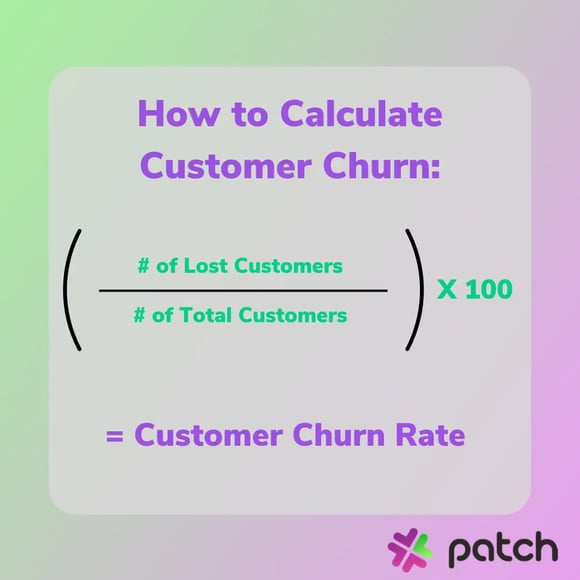
The first thing you’ll need to do is determine what timeframe you want to evaluate (week, month, year, etc.). Then, you’ll need to look at each of these factors within that period:
# of Lost Customers: The number of customers you lost over your selected time period. You can get this number by subtracting the customers you started with from the number of customers you ended the time with.
# of Total Customers: The total number of customers you had during the selected time period.
For example, if you had 1,000 customers at the beginning of the month and 150 customers left during that same month, your churn rate would be 15%.
| (150 /1,000) * 100 = 15% |
Remember, your churn rate indicates how successful your store is at retaining existing customers, so understanding and improving this metric is essential for any eCommerce business.
To understand why customers churn, it’s essential to pinpoint the exact reasons that caused them to leave in the first place so that you can develop strategies to reduce customer attrition and improve customer loyalty.
Easier said than done, right?
Customer churn is often the result of a number of complex factors, but there are some common causes (none of which are good) that play a major role in the decision to stop doing business with your brand, such as:
Now that you know some common factors let’s look at six different ways you can get to the bottom of why your customers are leaving.
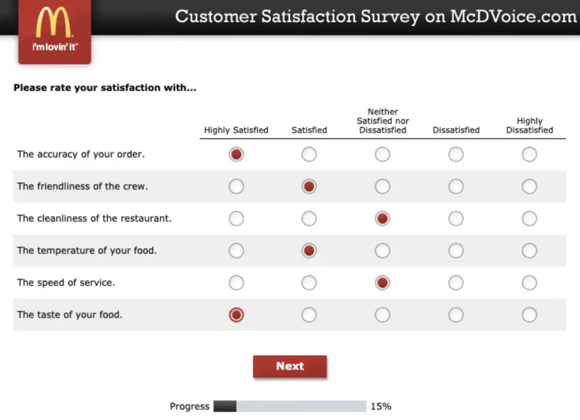
Customer retention surveys are an excellent way to find out what your customers love (or dislike) about your brand and how they would rate their experience.
They typically include questions about the customers:
By gathering customer feedback, you gain valuable insights that let you evaluate your customer’s loyalty and identify any negative trends that are occurring with your customers.
When analyzing your customer retention surveys, it is important to take note of the factors that could be leading to customer churn, such as customer dissatisfaction with specific features and services, or difficulty using the product or your website.
Additionally, you should be on the lookout for any trends in the responses that may indicate an impending customer churn risk, such as a decrease in satisfaction or customer engagement with your brand.
Understanding these factors helps you improve your processes and policies, allowing you to retain customers better.
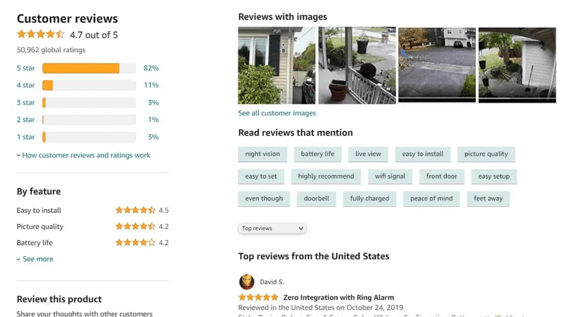
Product reviews are great resources to discover what customers think of your product, what problems they may be having with it, and where you should focus your resources.
Unlike customer retention surveys that are designed for your eyes only, these reviews (both solicited and unsolicited) allow customers to share their opinions about your brand’s products and services with other customers.
When evaluating customer churn factors from product reviews, you should look for common issues that are mentioned across multiple reviews, such as:
Analyzing product reviews gives you a better understanding of how you measure up against competitors and what changes need to be made to stay ahead.
With the right approach, product reviews can provide great insight into customer churn factors and help you make smart business decisions.
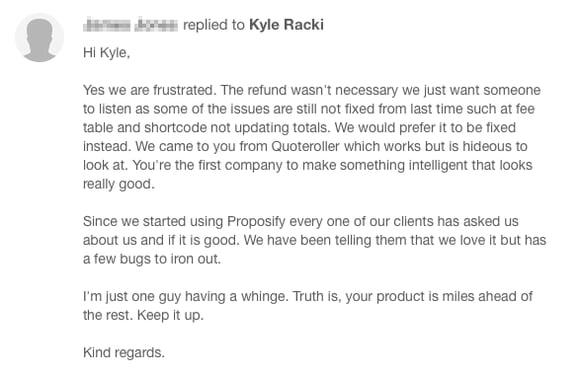
Let’s face it; nobody likes to sit and filter through customer complaints. But hidden within this critical feedback are gems of information that cut straight to the root cause of dissatisfaction and pinpoint the areas that need to be improved.
Unlike reviews and surveys, customers often express the exact factors that led to their decision to leave because, well, it agitated them enough to complain about it. Customers often complain about:
When analyzing customer complaints, look for any patterns that could indicate issues with your product or service. Additionally, note any discrepancies between what customers expected and their actual experience.
Once you understand what your customers are unhappy about, you can take steps to prevent further customer churn and try to win back dissatisfied customers.
This could include improved communication on your part, adjusting pricing or product offerings, or finding ways to provide better customer service and support.
It’s important to remember that not every issue will be solvable, but at least you’ll be able to identify big problems and can work on solutions.
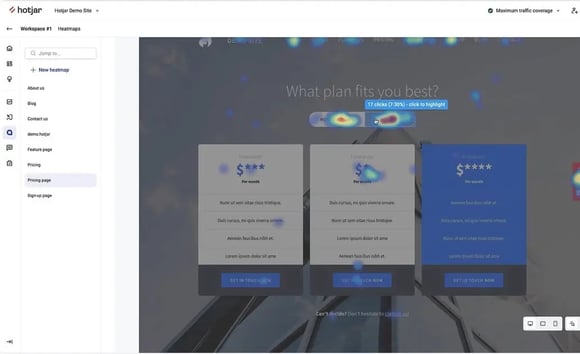
When it comes to understanding exactly how customers interact with your website or app, you need to use behavior analytics tools and heatmaps. Luckily for you, some behavior analytics tools provide heatmaps as one of their features.
But what exactly is the difference between the two?
Heatmaps: These are visual representations of customer activity on your website, including clicks, taps, or scrolling. They enable you to quickly identify pinch points, navigation flows, and other areas of potential concern.
Behavior Analytics Tools: These help you understand individual user behavior more deeply by providing data on the frequency and duration of their interactions with your product or service.
Using both of this information in tandem, you can begin analyzing what factors with your website or app might influence customer churn and look for any significant changes in user behavior over time.
For instance, if you see your customers clicking on the checkout, entering their information, and abandoning the cart, then there might be an underlying UX issue that needs to be addressed.
Hotjar is one of the most popular behavior analytics tools that include heatmaps, allowing companies to form a much deeper understanding of their customer’s needs.
By focusing on improving user experience, you can ensure that your customers stay engaged with your product or service and don’t look elsewhere.

Social media and forums are hotbeds of customer opinion—even more so than complaints or reviews since they don’t think you’ll ever see them!
But monitoring the conversations on these platforms gives you valuable insight into what customers say about your brand, whether good or bad.
They’re an out-of-the-box way to identify potential churn factors and learn how to improve your services or products. When analyzing conversations on social media and forums, it’s important to pay attention to the following:
Tone of Comments: Do they sound frustrated or delighted?
Quantity of Posts: How many customers are talking about your brand? Do they post frequently or just once and then disappear?
Frequency of Posts: Is your brand mentioned often, indicating strong brand loyalty? Or are you being discussed less frequently, suggesting a potential problem?
Type of Content: Is it information about your product or service? Or is it complaints or criticisms about your brand?
Remember, people use social media to establish a sense of community. They may be more open in this environment, so pay attention to their conversations, and you’ll have a better understanding of how your customers think.
6. Leverage Specialized Customer Retention Tools for eCommerce
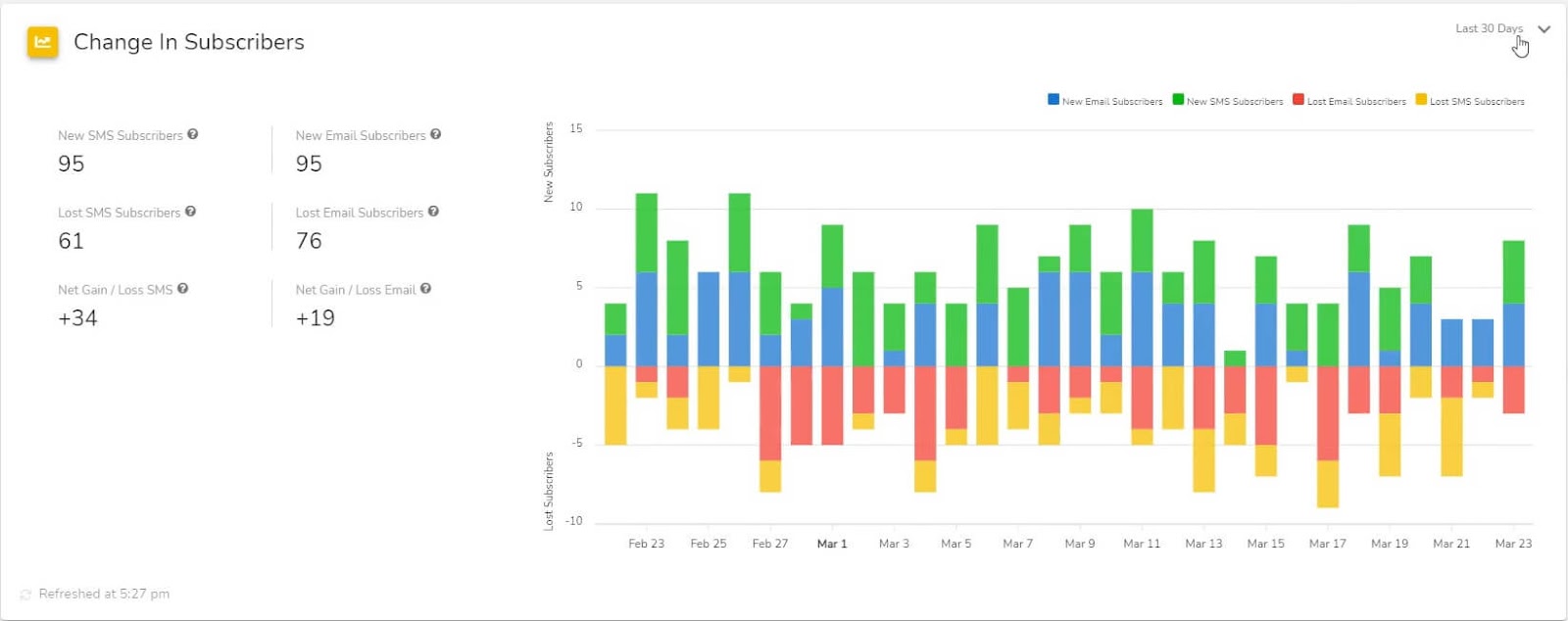
The key to effective customer retention is understanding what motivates customers to stay loyal and actively engaging with them to build relationships.
Fortunately, there are a plethora of strategies that businesses can use to reduce customer churn, such as:
But the only way to implement all these strategies is to use a specialized customer retention tool, like Patch. These tools are designed to help you capture valuable insights into your customers’ preferences and behaviors.
They evaluate key metrics, including customer lifetime value, loyalty programs, purchase frequency, etc., to determine which customers are at risk of leaving your business.
At Patch, we do all this and more!
Our solution gives you powerful analytics and insights, letting you have a bird’s eye view of your customer base’s behavior, so you can identify at-risk customers before it’s too late.
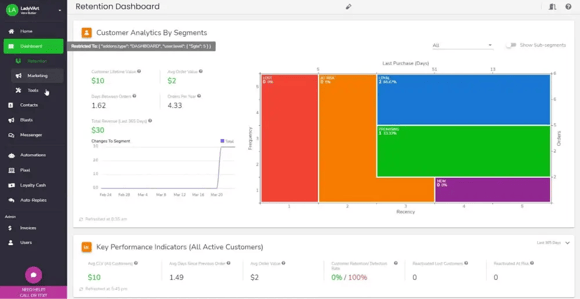
On top of that, we let you segment your data based on channels, so you can see where your campaigns have the most impact.
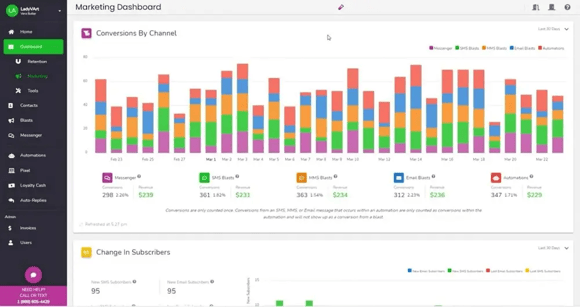
And using our automated customer journeys, you can build specialized campaigns that are designed to keep customers engaged, nudging them with personalized incentives when they’re starting to lose interest—so you can win them back quickly and easily.
With Patch, you can finally kiss churn goodbye and keep your customers happy for good! Schedule a demo today and see how easy it is to take control with Patch.
Harness the power of data for customer churn analysis and reduced attrition. Learn how to analyze and apply insights to minimize customer loss today!
Discover the top 10 benefits of RFM analysis and how it can help you identify the most valuable customers, reduce churn, and improve marketing ROI.
Explore how Patch Retention elevates customer retention with personalized rewards, making loyalty more than a program—it's a lasting connection.